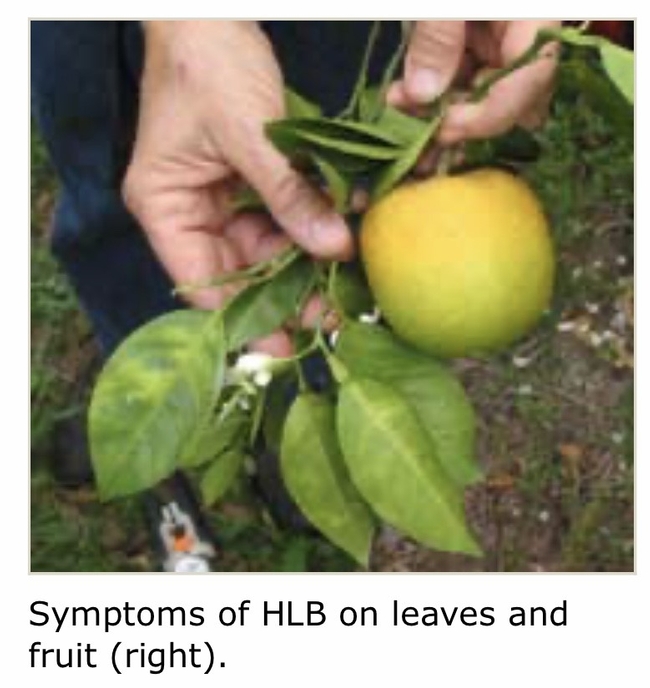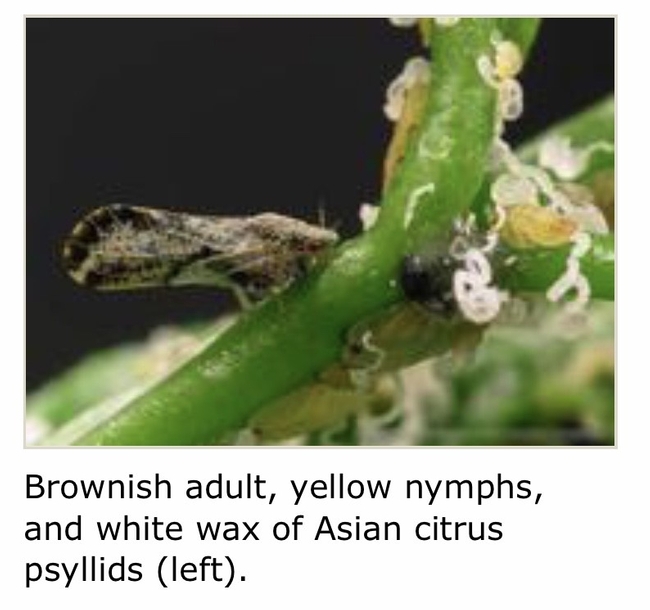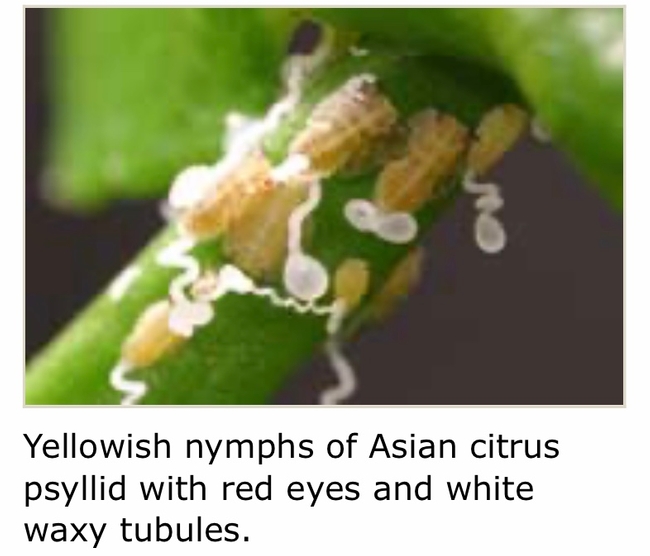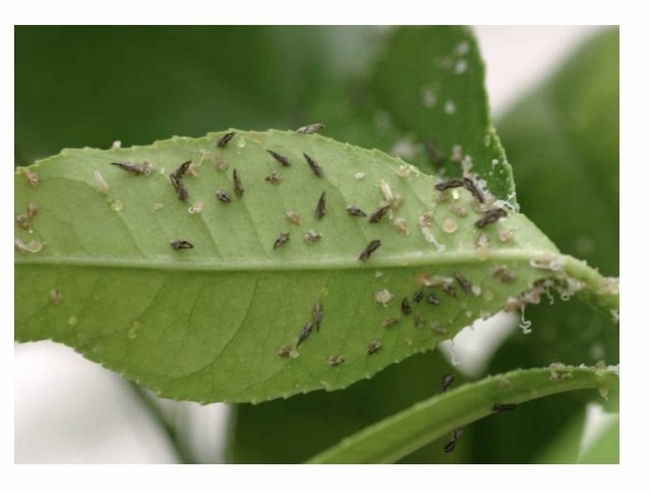Asian Citrus Psyllid and Huanglongbing Disease
While counties behind the Redwood Curtain have thus far been immune to the effects of Huanglongbing disease, it is important for growers of citrus and related plants to know of this devastating disease. This short primer on the disease is drawn from the University of California Riverside, Agriculture and Natural Resources research facility. This premier facility has over 1600 trees planted to study every aspect of citrus growing.
Asian Citrus Psyllid (ACP) insects are found worldwide. These insects carry Huanglongbing disease. In 1998 ACP had established itself in Mexico, Florida and Texas. The Florida citrus crop was devastated by over 50% loss of trees during the height of the spread. In 2008 ACP was detected in Southern California vectoring in from Mexico. ACP are very small winged insects the size of an aphid (approx 4mm or 1/8”). Since 2008, the ACP has migrated northward through California's central valley and is now established in the Bay area and Sacramento. The problem is not the ACP, but the disease it carries: Huanglongbing.
Huanglongbing (HLB), also referred to as Yellow Dragon Disease or Citrus Greening Disease is a major disease of citrus. It causes reduced fruit quality and yield, tree decline and eventual tree death. It is vectored into trees by the ACP. During feed-ing, the ACP can transmit the bacterium that causes HLB disease. The psyllids feed on the leaves of citrus and other related plants (Kumquats, Chinese Box Orange, Orange Jessamine, Indian Curry Leaf, and more). During feeding HLB bacterium is injected into the leaves and transmits throughout the plant.
Bacterium blocks nutrient transport, affecting tree growth, fruit production and survival of the tree. HLB causes fruit to stay green and not fully ripen. Trees infected may be misshapen and lose symmetrical appearance. Trees also exhibit yellow asymmetrical discoloration on leaves, or blotchy yellowing of the leaves. Both these conditions will worsen as the disease develops. This yellowing is because nutrients are being restricted from the leaves. Don't confuse the discoloration with some common maladies such as deficiencies of Magnesium, Manganese or Zinc. Diseases such as Sweet Orange Scab, Cit-rus Canker, cold weather curling of leaves or sunburn are not HLB related. Check for the presence of ACP to confirm pres-ence of HLB.
ACP can be found in old or new growth areas of the tree. Eggs or nymphs arefound only in the very new growth (flush growth) area of a tree. Nymphs produce a sugar filled waxy tubule as they feed. These curly tubules are unique and can be easily seen. They also attract ants, so be on the lookout for ants. Check for the prescence of ACP by their feeding position. The ACP leans forward and tips its rear end at a characteristic 45 degree angle.
When ACP/HLB first appeared in the United States, there was no cure. Tree mortality is 100%, usually within 5 years. If infected trees are discovered in California, they are removed to lessen the infection chance to nearby trees. While no cure currently exists, there is hope on the horizon. Due to extensive research at the Riverside UC facility, two natural enemies of ACP have been found. Releases of these tiny imported wasps reduce the ACP population. Attractants are being added to the standard yellow sticky traps to capture ACP. Organic growers can spray a low rate of oil on trees at specific intervals. The UC is also exploring development of resistant cultivars to eliminate HLB. These and other measures have kept the current population of ACP from vectoring HLB into Northern California. Home gardeners and commercial suppliers must maintain vigilance to keep Northern California from becoming a breeding ground for ACP/HLB.
For more information UC/ANR has produced a video which can be found here
Asian Citrus Psyllid on Leaf



